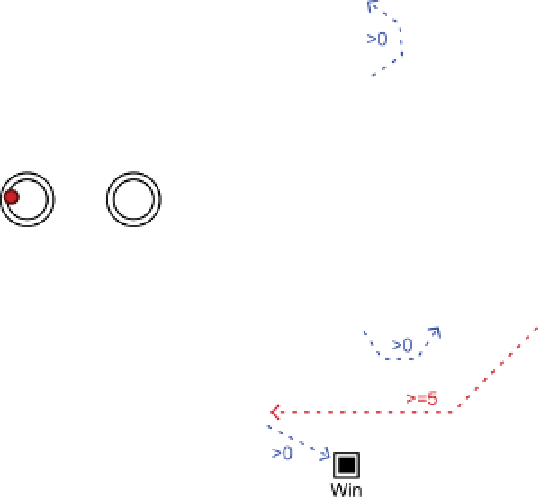Game Development Reference
In-Depth Information
FIGURe 10.9
a simple space for the
flower-collecting game
In this case, the presence of the player in a certain location unlocks particular
actions. This is a common use of space in a game and works equally well with one
resource to represent a single-player character or multiple resources to represent a
number of units under the player's control. In fact, we can take into account the
location of resources in a real-time strategy game space by allowing production units
to be moved across the map.
Figure 10.10
represents the mechanics of mineral har-
vesting in the level “The Devil's Playground” in
StarCraft II
, including the periodic
destruction of all SCV units in low-lying areas. Note that the distances between
the pools in the diagram do not indicate the physical distance to the resources on
the map. Rather, the lowered effect of SCV units on the production rate for the
resources on the right represents the real distance to the base.
You can use the player's location in the game to activate certain mechanisms, and
you can also use it the other way around to use the state of the mechanics to make
certain locations accessible. Figure 10.9 illustrates this idea. The goal location is
activated only when the player has collected five or more flowers. Mechanisms that
control the accessibility of certain locations in the game space are typically lock-
and-key mechanisms. In its simplest form, a lock-and-key mechanism depends on one
binary state: whether or not the player has acquired the correct key.
Figure 10.11
adds such a lock-and-key mechanism to the flower-collecting game.



